2021 Mazda CX-30 Turbo Review: First Drive

FAST FACTS
| Engine: | 2.5L I4 Turbo |
| Output: | 250 hp, 320 lb-ft (Premium fuel) / 227 hp, 310 lb-ft (Regular fuel) |
| Transmission: | 6AT, AWD |
| US fuel economy (MPG): | 22/30/25 |
| CAN fuel economy (L/100KM): | 10.5/7.9/9.3 |
| Starting Price (USD): | $31,225 (inc. dest.) |
| As-Tested Price (USD): | $35,820 (est, inc. dest.) |
| Starting Price (CAD): | $38,200 (inc. dest.) |
| As-Tested Price (CAD): | $38,650 (inc. dest.) |
The ol’ “too much of a good thing” idiom doesn’t seem to apply to Mazda.
The independent automaker is busy stuffing its torquey, turbocharged 2.5-liter engine into practically everything it offers, with consistent, positive results. It started with the larger models in the fleet, before trickling down into progressively smaller Mazdas. A few months ago the pumped-up four-pot arrived in the Mazda3, providing the compact car with the necessary go to match the show. And now there is this, the 2021 Mazda CX-30 Turbo.
Get a Quote on a New Mazda CX-30Not to put too fine of a point on it, but this CX-30 is the more important member of Mazda’s turbo family. The sub-compact crossover, which only launched a little over a year ago, is already the second-best-selling Mazda in the US, and third in Canada. If the brand is going to convince critics and shoppers alike that “Mazda” belongs in the same sentence as “BMW” or “Audi,” taking the fight to the red-hot segment is crucial.
Luckily, the CX-30 Turbo largely succeeds. Blessed with the power it’s always deserved, this stronger CX-30 has a level of personality the establishment can’t muster, at a price that might just translate to some conquest sales.
A bigger, stronger heart
Poke the CX-30’s push-button starter and the opening credits are a familiar show. The starter whirs just slightly longer than other marques. Shift into Drive and the CX-30 does the Mazda squat: you forgot the electronic parking brake, didn’t you? There are zero audible cues that the CX-30 is packing 35 percent more horsepower (250 on the good juice), or an enormous 72 percent more torque (320 lb-ft), either. It’s only once you roll into the throttle that the Turbo reveals itself. This thing moves.
SEE ALSO: Subaru Crosstrek vs Mazda CX-30 ComparisonMazda doesn’t quote a 0–60 mph time for the CX-30 Turbo—it doesn’t care to. “Bottom line is that 0–60 time just isn’t something that Mazda engineers pay attention to,” says Jay Chen, Mazda’s powertrain performance manager, “because it really doesn’t tell us how a car actually drives.” Instead, Chen talks of g-forces and “acceleration margin,” that sense of instant-access power. That tracks: the CX-30 feels like it always has reserves left, pulling strongly from any of its six forward gears. No muss, no fuss.
The flip side to this spritely performance is a bit of a thirst. The penalty for going with the Turbo is a 1-mpg dip over the nat-asp model across the board. You’re looking at 22/30/25 mpg, respectively. Dropping down to 87-octane fuel ain’t bad, either: under 4,000 rpm, the horsepower (227) and torque (310 lb-ft) curves are essentially the same.
Still handles well, too
Thankfully, the ample increases in power haven’t corrupted the engaging driving dynamics of the CX-30. This remains a fun, tossable little high-rider. The steering is light yet responsive, making it fun to thread the CX-30 along your favorite backroad. I took it down the same roads as the Mazda3 Turbo event last November, and the CX-30 more than held its own, even with the added slickness. Mazda has upgraded the rear differential mount, making it possible to send 300 percent more torque rearward when necessary. This allows for more rotation through corners.
The G-Vectoring Control Plus system also plays a major role, constantly monitoring and adjusting power levels at the wheels. With the Turbo, Mazda has tweaked the system’s behavior, specifically while Sport mode is active. In these conditions, GVCP pulls more torque from the front wheels, weighting the axle up to allow for more positive turn-in. It all feels very natural.
A stiffer front suspension balances out the 120-ish pounds (54 kg) of added weight the Turbo is carrying around. The aim here is to have the more powerful model feel just like rest of the lineup. At higher speeds it works, with the CX-30 a quiet and composed highway companion. Slowly making my way through inner-city traffic, however, and the Turbo feels slightly more agitated traversing the pock-marked parking lots.
No changes necessary inside—except one
It’s easy to get comfortable behind the wheel of the CX-30. The same high-quality interior found in the non-turbo is present here, with an unfussy, organic dashboard design in rich brown and black. Every touch point feels good—especially the wheel—while the seats find a fine balance between comfort and support. The dials are clear, as is the head-up display on this tester. There’s ample front leg and headroom too, with 41.7 and 37.8 inches (1,058 and 961, mm), respectively.
The rear pew is acceptable for two adults, or three if they’re fine with being friendly. They might want the extra warmth: no level of CX-30 Turbo comes with rear heated seats. There aren’t any rear-mounted USB ports either. Guests can fight for either of the two up front, or the optional wireless charger found in the center console.
SEE ALSO: 2021 Kia Seltos Turbo vs 2020 Mazda CX-30 Comparison“Fight” seems like the appropriate way to describe dealing with the infotainment, too. Mazda says the move away from a touchscreen to a rotary dial is less distracting for drivers. It would be, except if you’re using either Apple CarPlay or Android Auto, at which point the infotainment has now become the primary distraction. There’s never a clear logic to where the selector will move next. The system is the most glaring shortcoming the CX-30 has if Mazda wants to take on the entry-luxury crowd seriously.
A healthy level of standard safety assists appear across the CX-30 Turbo lineup, including Smart City Brake Support, blind-spot monitoring, rear cross-traffic alert, adaptive cruise control, lane departure and warning assists, auto high beams, and driver attention alert.
The value-lux scale
So the CX-30 has the power, agility, comfort, and quality necessary to take the fight to the premium sector. Does it come with a price tag to match? Yes and no.
The most affordable way to get the “Turbo” badge onto the back of a CX-30 rings in at $31,225, including destination. A $2,400 jump lands the the 2.5 Turbo Premium, adding things like leather seating, adaptive headlights, power liftgate, 12-speaker Bose sound system, heated steering wheel, navigation, head-up display, and more. The top Premium Plus ($35,225) bundles in a 360-degree camera, enhanced Rear Cross Traffic Alert, parking sensors at both ends, and Traffic Jam Assist.
Like they do with hockey, Canadians make it look easy with the CX-30 Turbo: there’s just one trim, the top-shelf GT, for $38,200 CAD. It’s something of a halfway-house between the two top US trims: take the Premium Plus, but drop the around-view camera, Traffic Jam Assist, and a few other minor driver assists. That’s what you see here, with the sole option being the Soul Red paint ($595 / $450 CAD).
Cracking the $30k barrier is a big deal for a vehicle this small, but I’d like to remind you that a 141-horsepower Nissan Rogue Sport can come in at $31,085. Meanwhile, an Audi Q3 45 quattro starts at $37,095 ($41,545 CAD), and it’s the least expensive of the three Germans. An all-wheel drive X1 lists for $38,395 ($42,470 CAD), and the new Merc GLA goes for more still. We’re still looking at thousands in options to match the Mazda’s features, too—and nothing short of the GLA 35 AMG will out-perform it.
Verdict: 2021 Mazda CX-30 Turbo First Drive Review
Before the Turbo transformation, the Mazda CX-30 was already the AutoGuide crew’s favorite sub-compact crossover. It held off two of its toughest mainstream competitors (the Kia Seltos and Subaru Crosstrek) without really breaking a sweat.
SEE ALSO: 2021 Kia Seltos Turbo vs 2020 Mazda CX-30 ComparisonThis new model goes hunting for bigger game without sacrificing what makes the package so strong: sharp looks, an engaging driving experience, and an air of premium without ostentation. We’ll need to get it up against the competition to know for sure, but early signs suggest the CX-30 Turbo deserves a seat at the premium table.
Become an AutoGuide insider. Get the latest from the automotive world first by subscribing to our newsletter here.
LOVE IT
- Smooth, always-available power
- Adept handler
- Thousands less than zee Germans
LEAVE IT
- Busy low-speed ride
- Irksome infotainment
- Thirsty

Kyle began his automotive obsession before he even started school, courtesy of a remote control Porsche and various LEGO sets. He later studied advertising and graphic design at Humber College, which led him to writing about cars (both real and digital). He is now a proud member of the Automobile Journalists Association of Canada (AJAC), where he was the Journalist of the Year runner-up for 2021.
More by Kyle Patrick



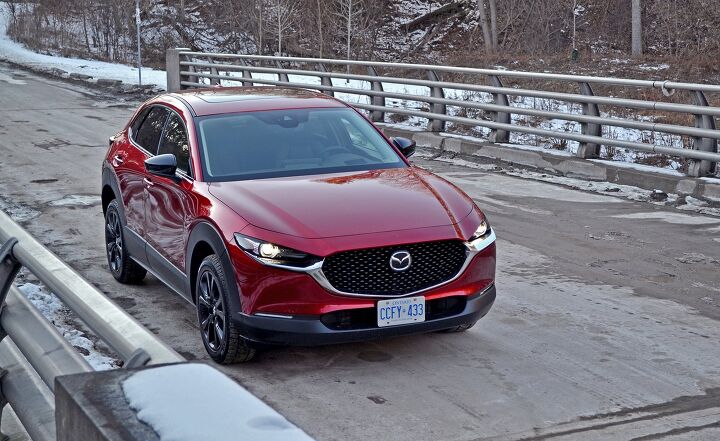


















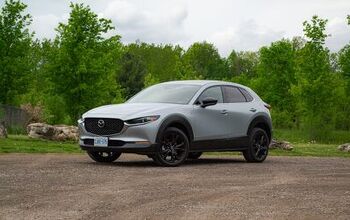
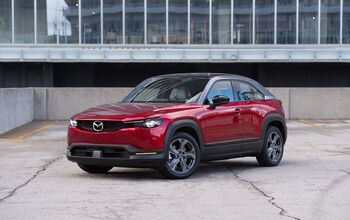
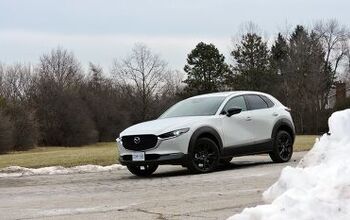





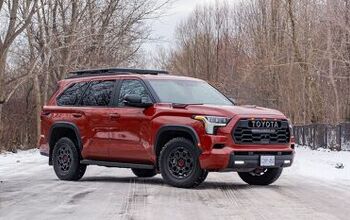
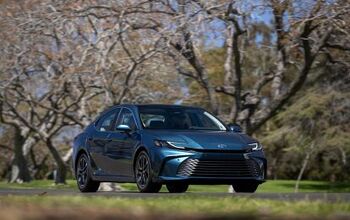
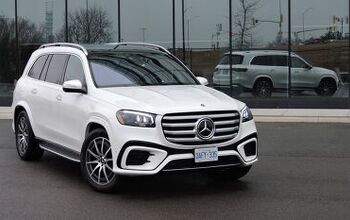

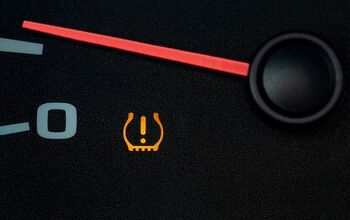
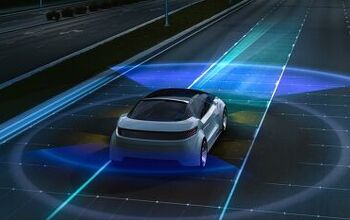

Comments
Join the conversation